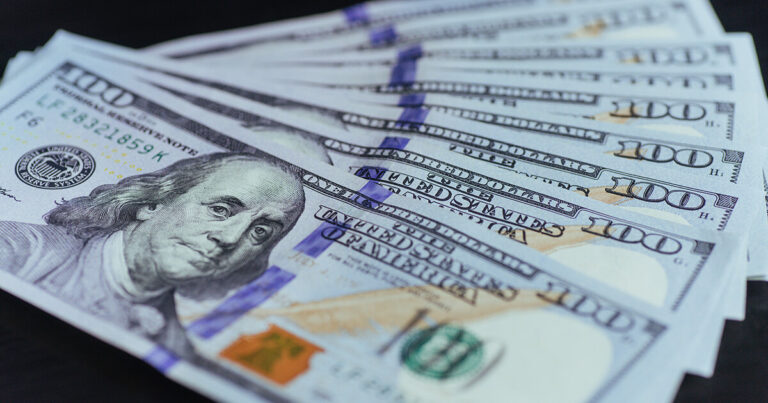
In this week’s currency trend analysis, impressive economic updates and high optimism uplift the USD again. Other fundamentals were also in focus significantly impacting the g7 currencies performances.
Against all odds, the kiwi dollar took the top spot while the Japanese yen emerged as the week’s biggest loser.
Fundamental In This Week’s Currency Analysis

Treasury Yields
The US treasury bonds spiked to a 14 month high of 1.776 on Tuesday before closing the week at 1.714. The Treasury yield increased pushed by the positive economic outlook, coronavirus rollout, and Joe Biden’s $2.25 trillion American Job Plan (AJB).
Economic Data
Amid the coronavirus vaccination rollout, the G7 member countries posted improved economic recovery. Notably, Canada and China recorded robust economic data. Eurozone business confidence and economic activities also went up but this could decline as the bloc struggles with COVID-19 spikes and vaccine distribution challenges.
Coronavirus News
While the US Fastrack its efforts in the coronavirus vaccination rollout, Europe struggles with vaccine distribution, slow inoculation, and another round of lockdown. Amid the spike in COVID-19 recent cases WHO says vaccination rollout in Europe is “Unacceptably Slow”.
Europe has vaccinated 10% of its citizens while the US aims to inoculate 90% of its citizens by April 19.
Globally, as of Sunday the 4th of April, 131m people have been confirmed with the disease while nearly 2.9 has succumbed to the disease.
Forex Crude Oil Trading
Despite a strong global economic recovery, crude oil declined by 0.87% over the week. OPEC’s decision to cut production on Friday affected forex crude oil trading causing to regain some losses accrued earlier in the week.
G7 Currencies Economic Review And Performance
Table: G7 performance summary
| Currency pair | 29th March | 4th April | Average | Percentage change | Remarks |
| USD | 92.956 | 93.040 | 93.100 | 0.286 | increase |
| GBPUSD | 1.3759 | 1.3827 | 1.3794 | 0.2901 | drop |
| EURUSD | 1.1795 | 1.1763 | 1.1751 | 0.2798 | drop |
| USDCHF | 0.9390 | 0.9427 | 0.9419 | 0.3994 | increase |
| USDJPY | 109.78 | 110.71 | 110.46 | 0.90 | increase |
| USDCAD | 1.2588 | 1.2573 | 1.2580 | 0.0238 | Increase |
| AUDUSD | 0.7630 | 0.7613 | 0.7679 | 0.3077 | drop |
| NZDUSD | 0.6997 | 0.7030 | 0.7006 | 0.4071 | increase |
USD Soar For The Third Week
Currency trend analysis shows the American dollar registered a 3rd weekly gain strengthening by 0.28% to 93.022. Previously the green buck had rallied by 0.92%. Strong dollar strength was recorded on Friday after the release of positive economic data.
Improved economic performance and government spending plans significantly supported the positive outlook. Overall, the US had a quiet week on the economic data front. Even so, little economic data moved the market.
In the first half of the week, Consumer confidence and nonfarm employment figures supported the dollar. Consumer confidence jumped from 90.4 to 109.7 while nonfarm employment rose by 517K.
In the second half of the week, the ISM manufacturing index increased from 60.8 to 64.7 but jobless claims disappointed, rising from 658k to 719k. At the end of the week, nonfarm payrolls surged by 916K, pushing the unemployment rate down from 6.2% to 6.0%.
On Wednesday, President Joe Biden proposed a $2.25 trillion American Job Plan (AJP).
In short, AJP proposes to improve physical infrastructure, green energy production, high-speed broadband, and human labor development. It also includes tax measures to finance the project.
The continuing coronavirus vaccination rollout and easing of restriction measures added more support for the dollar.
Gbp Usd Forecast Investing
The UK had a quiet week on the economic calendar despite that; the pound increased by 0.31% reversing the 0.60% previous drop. On the economic data front, the UK’s economy expanded by 1.3% in the 4th quarter, much lower than the 16.9% jump in the 3rd quarter.
Also, positive to gbp usd forecast investing was an increase in the manufacturing index from 55.1 to 58.9. On Monday the Bank of England (BOE) rate-setter, Gertjan Vlieghe‘s sentiments boosted the pound. Vlieghe showed Britain’s economy still needs central bank support.
Eur Usd Forex Predictions
Eurozone had a relatively busy week on the economic diary with key statistics being inflation figures, consumer spending, unemployment, and manufacturing PMIs. Though positively skewed, the data had a mixed reaction to eur usd forex predictions. Consumer spending dropped, while retail sales increased, but the unemployment rate remained steady.
Better than earlier projection manufacturing PMI hit 62.5, an all-time high. As expected, inflationary pressure increased to 1.3% providing the much-needed support for the euro’s currency trend analysis.
Despite the positive economic data, coronavirus news weighed heavily on the euro. A fresh spike in new coronavirus cases and vaccine supply disruption weighed on the euro over the week.
And by the close of the week, the euro weakened by 0.30% to 1.1759 against the green buck. Previously it had softened by 0.92%. Investing.com shows the euro traded in red most of the week weighed heavily by coronavirus spikes and lockdown measures across the eurozone.
Usd to Chf Currency
Usd to chf currency exchange rate fluctuated over the week driven by broad risk sentiments. Despite posting positive economic updates it lost against the green buck.
The KOF Economic Barometer improved to 117.8, the highest since 2010. The increase shows a rapid economic recovery. Both the manufacturing and construction sectors improved compared to the previous month. Swiss consumer price index (CPI) improved by 0.3% in March.
Also, spikes in coronavirus fresh cases and vaccine distribution hitches across Europe weighed heavily against the usd chf currency exchange rate. According to Investing.com currency trend analysis, the Swiss franc shed off 0.3994% to the American dollar.
Dollar vs Canadian Dollar
Another quiet week in the Canadian economy saw dollar vs Canadian dollar prediction primarily driven by positive economic data and risk on sentiments. Canadian economy outperformed earlier projections.
The country reported increased employment figures and retail sales. The monthly economy expanded by 0.7% and yearly by 2.3%. Canada added 259K new jobs contrary to 75K earlier projected, lowering the unemployment rate from 9.4% to 8.2%.
Also, positive to the Canadian dollar was the Industrial Price Index which improved by 2.6% and the Raw Material Price Index RMPI increased by 6.6%. Despite the positive economic statistics, it was not enough to support the loonie against the strengthening USD.
Crude oil prices marginal increase could not also uplift the Lonnie. Thus, by the close of the week, the loonie dropped dismally by 0.01% to 1.2578.
Meanwhile, in the Asia-Pacific region,
It was a horrible week for the Japanese yen and Australian dollar but positive to the New Zealand dollar.
Aud Currency News
According to currency trend analysis, the Aussie fell by 0.35% to 0.7610 against the American dollar. Mid-week, building approvals and private sector credit dominated aud currency news.
On a positive note, building approvals increased by 21.6% reversing a 19.4% previous drop. However, private sector credit disappointed, rising slightly by 0.2%. Towards the end of the week retail sale, manufacturing, and trade data affected aud currency trend analysis.
While retail sales dropped by 0.8% the manufacturing sector significantly uplifted the Australian dollar. More pressure against the Aussie came from a decline in trade surplus reported on Thursday, dropping from Aud 9.62 billion to Aud 7.53 billion.
On Friday, the Aussie gained 0.57% regaining the losses made earlier in the week. Australia posted positive economic data but was overshadowed by coronavirus upsurge and lockdown measures.
Nzd Currency News
Weighed by negative economic updates, the New Zealand dollar started the week badly. However, in the second half of the week, the New Zealand dollar recovered and closed up by 0.46% at 0.7032 against the American dollar.
According to nzd currency news, building consents dropped by 18.2% while the business confidence index stumbled from +7 to -4.1. Despite the poor economic update, the New Zealand dollar gained against the American dollar mostly on risk-on sentiments and counter currency flow.
Usd Jpy Currency News
In the 1st half of the week, negative economic updates pulled down the yen. Retail sales spiraled downwards further by 1.5%, following a previous 2.4% drop. Industrial production dropped by 2.1% partially reversing a previous 4.3% increase.
In the 2nd half of the week, positive economic data supported the yen. Manufacturing PMI rose from 51.4 to 52.7 with the non-manufacturing index increasing from -5 to -1. According to usd jpy currency news the Japanese yen reduced by 0.96% to 110.69 against the American Dollar. In the week before, the Yen had dropped by 0.70%.
Geopolitics tensions also worked against the yen. China warned Japan over uninhabited islands in the East China Sea.
Conclusion

For the third week in a row, the American dollar traded in the green. And in this week’s currency trend analysis, except for the New Zealand dollar, the greenback gained against other g7 economies.
Positive economic data and coronavirus news predominantly drove the forex market. These fundamentals are expected to drive the financial market for the coming weeks.




